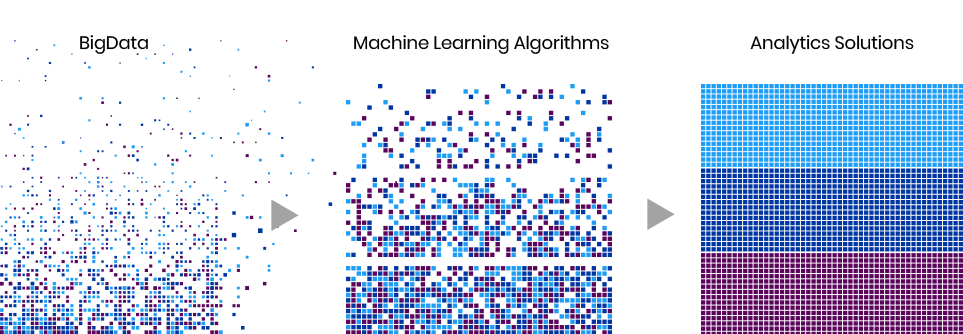Get Appointment
- contact@wellinor.com
- +(123)-456-7890

Big Data
Big Data is not just data that is big, but data that simply, uncontrollably and briskly- keeps getting bigger and bigger.
Why Big Data?
Enterprises have long ignored the power of Big Data. And suddenly, they find themselves staring at huge haystacks and mazes of data. The world changed from Exa to Yotta in the blink of an eye, and true competitive advantage turned out to be tucked somewhere underneath these very mountains and mazes.

How Vuesol Work
Yet, Big Data was and stays a slippery genie. Unless someone knows how to grasp the insight hidden inside, swiftly, deftly and deeply, there is no point amassing barrels and barrels of data that lie idle and stink. There is also the challenge of cold data, warm data and hot data to be addressed to get the best out of Big Data.
Vuesol’s consulting expertise and suite of bespoke solutions allow you to get comfortable with the overwhelming connotation of Big Data and harness its implications with confidence and clarity. We help you extract, analyze and interpret. We help you translate Big Data into Big Power. We help you tame the beast to be your friend. We help you get to the needles faster while your competition is busy piling up haystacks.

FAQs
What are the challenges of big data?
Some challenges of Big Data include data quality, storage, lack of data science professionals, validating data, and accumulating data from different sources.
What is big data and its types?
Big Data is a collection of data that is enormous in volume and is expanding exponentially. No typical data management systems can effectively store or process this data because of its magnitude and complexity.
Following are the types of Big Data:
1. Structured Data: It refers to any data that can be accessed, processed, and stored in a fixed format.
2. Unstructured Data: It refers to any data whose shape or organisation is unknown.
3. Semi-structured Data: It can contain both the forms of data.
Why is big data important to business?
Big data is used by businesses to enhance operations, deliver better customer service, develop individualized marketing campaigns, and carry out other tasks that can ultimately boost sales and profits.
How is big data creating better customer experiences?
Big Data improves customer experience by targeting the right leads. It helps in performing sentiment analysis and predicting future trends. With big data, companies can easily track down negative comments and respond to customer problems.
Why Data visualization is becoming more popular than ever?
Data visualization become more popular than ever because it is essential for analyzing massive amounts of information and making data-driven decisions.
What is big data security analytics?
Big Data Security Analytics collects massive security datasets that are difficult to evaluate using standard security data processing software or on-hand database management solutions. They are secured using the most recent big data approaches.
How do I get started with big data security analytics?
Businesses from all industries are adopting big data and analytics because it is recognized as a largely untapped source of value. The steps to start with big data security analytics are as follows:
1. Identify use cases
2. Qualify your data
3. Prepare the project
4. Set up the platform
5. Collection of data
6. Storage
7. Processing and analysis
8. Data Visualization
What kind of analytics tool needed by business analyst?
Here are the business analytics tool needed by business analysts:
1. Requirements management
2. Project management
3. Enterprise resource planning (ERP)
4. Modeling / Diagramming
5. Wireframing
6. Collaboration / Communication
7. Customer relationship management (CRM)
8. Extract, Transform, Load (ETL) / Extract, Load, Transform (ELT)
9. Inbound marketing
10. Data visualization

